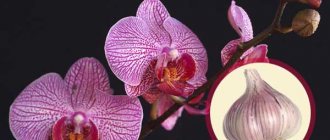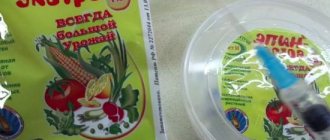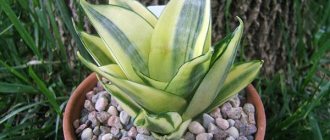Succinic acid for orchids is used for various purposes. These white tablets, which are crushed into powder and then dissolved in water, are used to feed indoor orchids, resuscitate plants and fertilize. This drug must be used correctly so as not to harm the flower, so it is very important to follow the instructions and dosage. There are many questions associated with this drug. You can find the answers in this article. You can also watch a video that describes the process of resuscitating an orchid.
Properties of succinic acid
Succinic acid is a colorless and odorless powder that is highly soluble in aqueous or alcoholic media. Its beneficial properties are used both in the field of medicine and in the field of floriculture, horticulture and gardening.
Useful properties include:
- normalization of the natural microflora of the soil: promotes better absorption of nutrients and fertilizers, increases productivity, seed germination and plant growth, has a beneficial effect on indoor flowers;
- increasing the stress resistance of plants to unfavorable environmental conditions;
- promotes rapid recovery of sick and damaged plants;
- prevents the accumulation of harmful substances in plants;
- improves the taste of fruits.
For your information! Succinic acid is not a fertilizer, but an auxiliary material for better absorption of nutrients and an obstacle to the accumulation of toxic substances.
An aqueous solution of the drug is used in flower care. For orchids, this is an ideal watering agent. An orchid is a beautiful flower, but very finicky to care for and takes a long time to adapt to changes in microclimate and changing pots. Therefore, the properties of the acid help the flower to remain strong, healthy and irresistible in the best possible way.
Safety for humans
Succinic acid is absolutely safe for humans, even useful. It helps improve immunity and removes toxins. There are even recipes with tablets that help with ARVI diseases. The main thing is to prevent succinic acid from coming into contact with mucous membranes and skin.
When working with the drug, it is recommended to wear rubber gloves and work in a respirator or gauze bandage.
What is it used for?
The benefits of amber for plants are undeniable. It is affordable and easy to use and is suitable not only for orchids, but for almost all plants.
In flower care, the drug is used in cases where:
- rapid regeneration of leaves is necessary in case of frostbite or overheating;
- it is necessary to speed up the adaptation period after transplantation so that the plant does not die;
- the orchid experiences moisture deficiency, is exposed to sunburn or low temperatures;
- increased photosynthesis and saturation of leaves with chlorophyll is required;
- weak root system and cuttings need growth stimulation;
- the substrate needs healing;
- I would like to increase the duration of orchid flowering.
How does it work on orchids?
Succinic acid is an environmentally friendly drug, as it is produced from natural raw materials, which is another advantage. The influence of amber on an orchid significantly improves its condition and stimulates its development. An orchid is a very capricious plant and can hardly tolerate replanting, especially at the time of flowering. Succinic acid helps it quickly cope with new growing conditions and adapt to the microclimate.
The use of the so-called medicine in caring for orchids contributes to the growth of green mass. New roots begin to form, the leaves of the plant become strong and elastic, and more and more beautiful buds appear.
For your information! It is necessary to take into account that the use of succinic acid is cumulative. It takes time to see the positive effects of its use. But you shouldn’t get carried away with it. It has the property of acidifying the soil.
When should you not fertilize?
There are no contraindications for feeding orchids with succinic acid. The main attractive feature of the drug is its absolute safety; it is only important to follow the dosage and treatment regimen.
- Watering an orchid with succinic acid can only be done in spring or summer, during the period of active growth. In autumn and winter, the plant rests, all processes slow down and there is no need to stimulate them.
- During the period of formation of ovaries in an orchid, it is better not to process it, since at this time stimulation can harm the flower.
How to dilute succinic acid for orchids?
When preparing a solution of succinic acid, both powder and tablet forms are used.
Tablet solution
To prepare a solution from tablets you need:
- Take the required amount of the drug and crush it into powder.
- Add a little hot water and mix well until the tablet is completely dissolved.
3. Dilute the resulting mixture with water at room temperature. For preventive watering - 1 tablet per 500 ml of water, for urgent help to the plant - 1 tablet per 250 ml of water.
Powder solution
The solution is prepared in the same way as from tablets. The calculation should be carried out as 1 g. powder (about the tip of a kitchen knife) per 5 liters of water.
Both solutions must be used warm.
Attention! If the drug solution gets on the skin, it must be washed with soda, then rinsed under running clean water.
Cooking recommendations
When preparing a useful solution, you must follow certain rules:
- pay attention to the shelf life of the drug: in dry form, succinic acid can be stored in a dark, non-humid place at a temperature of 25ºC for up to three years; prepared solutions can be stored for up to 2-3 days. But it is recommended to use them within several hours, since the beneficial properties are quickly lost in air;
- To prepare a life-giving tonic, you cannot use metal utensils, only plastic or glass;
- use non-transparent containers to store the prepared solution;
- Succinic acid should not be stored near possible sources of ignition or at high temperatures.
Release form: tablets, powder and concentrate
You can purchase succinic (dicarboxylic or butanedioic) acid at a regular pharmacy or in specialized flower shops.
In pharmacies it is sold in tablets of 0.1 g and 0.25 g and may contain some impurities, such as starch, talc, ascorbic acid, etc. When diluting the drug, this must be taken into account.
For better dissolution, it is recommended to first crush the tablets to a powder form.
In specialized stores, the drug can be purchased in liquid and powder form, ready for use. For example, the water-soluble concentrate “Yantarin” contains acid in a dosage of 5 grams per 1 liter.
How to treat an orchid with succinic acid?
Succinic acid has a very beneficial effect on the growth and development of the orchid, helps it adapt to a new pot, strengthens the root system and prolongs flowering. To feed and treat different parts of the plant, the drug is used in different dosages.
Root treatment
- when replanting an orchid: after the plant has been removed from the old pot and its roots have been cleared of the remaining substrate, the root system is soaked in a solution of succinic acid for 30 minutes. The solution is prepared at the rate of 1 tablet per 0.5 liters of water. Then the roots are dried in the open air, and the plant is transplanted into a new pot.
Attention! If the root system is severely damaged and urgent renewal is required, then the roots are soaked in succinic acid for about 2.5 hours.
- during planned root treatment: when planned stimulation of the root system is necessary, the orchid is watered with a 0.2% aqueous solution of the drug until the substrate is soaked to a depth of 15-30 cm 2 times a month.
Watering. How to properly water orchids with succinic acid
Watering orchids with a stimulant is advisable when the root system needs to be revived. The irrigation solution is prepared at the rate of 1 tablet per 1 liter of water.
Watering is carried out from a small watering can with a small stream until the soil is completely saturated. Leave the orchid for 15 minutes, then drain off excess moisture to prevent root rot.
Watering phalaenopsis differs from standard watering of orchids. After a 30-minute treatment with succinic acid, the flower pot is turned over to remove excess moisture. This procedure is carried out due to the lack of drainage holes in the phalaenopsis pot. The frequency of such processing is 2 times a month.
Attention! Treatment of phalaenopsis by watering with a solution of succinic acid should not be carried out during flowering and rest after it.
Leaf processing. Do I need to remove the solution from the leaves?
Orchid foliage needs to be treated with succinic acid no less than other parts of the plant. Through their pores, beneficial substances are quickly absorbed and distributed throughout the flower. Treatment consists of wiping the leaves with a solution of the drug in a ratio of 1 tablet per glass of water. This procedure is necessary when:
- the leaves began to turn yellow and wither;
- the appearance of the orchid has deteriorated significantly;
- propagation of an orchid by the apical part.
Frequency of treatment – 1 – 2 times a week. During the procedure, the orchid must be protected from direct sunlight to avoid burns on the leaves. Wipe the orchid leaves on both sides.
After treatment, the solution is not removed from the leaves, but all the beneficial substances are allowed to be absorbed. If the solution gets on the inflorescences, it must be wiped off.
Spraying
The procedure is similar to processing leaves, only less time-consuming. You need to spray the orchid with a solution of succinic acid carefully, without getting it on the inflorescences.
Spraying young orchid cuttings is most useful. This promotes the rapid development of plant shoots. Frequency of treatment – 1 time per week.
Resuscitation of the root system of orchids
If the orchid is not properly cared for or its substrate is over-moistened, the root system of the plant begins to rot. If drastic measures are not taken in this case, the plant may die. Then succinic acid comes to the rescue.
To begin with, remove the orchid from the pot and cut off all damaged and rotten areas of the roots. Then all cut areas are treated with brilliant green and activated carbon. The roots of the orchid are placed in a solution of succinic acid and placed in a bright place, maintaining a suitable microclimate with temperature and humidity.
The solution must be changed every 2 - 3 days for 3 months. This is exactly how much an orchid needs to develop new young roots. When the young roots reach a length of approximately 5 cm, the orchid is transplanted into a permanent pot.
To stimulate flowering
For an orchid to bloom long and beautifully, it needs proper care. The condition of the roots and leaves affects the budding of the flower. Treatment with succinic acid promotes better flowering of the plant. To do this, treat the orchid with a 1% solution of succinic acid (1 g of the drug per 1 liter of water) should begin in early spring by spraying or wiping the leaves. Contact of the solution with the petals is not allowed.
The first spraying should be done before the plant begins to flower - 2 times a day. Next, once every 2–3 weeks on an orchid that is not yet blooming.
How to treat seeds?
A 0.2% aqueous solution of succinic acid is used to soak the seeds. After this procedure, their germination rate increases. This is especially necessary for stale old seeds or seeds that require special conditions for germination, for example, orchid seeds.
To obtain a 0.2% solution, you need to dissolve 2 g of the drug in 1 liter of water. The seeds are soaked in the resulting solution for a day. Then they need to be dried on a dry cloth in a place out of direct sunlight. After this, the seeds are sown in the prepared soil.
Dosage: in what proportions and how much to dilute?
To prepare a standard solution for watering plants, use 1 tablet (or 1 gram) per 1 liter of water as a top dressing.
At the beginning, it is recommended to dissolve the powder in 200 ml, and then bring the composition to the desired volume. The liquid should be used immediately after preparation; storage is not recommended.
To resuscitate and save the root system, a more concentrated solution is prepared.
Solutions with other substances
Since succinic acid is an enhancer for various types of fertilizers, it can be used in conjunction with mineral and vitamin supplements, growth stimulants, etc.
In turn, you can enhance its effect:
- using ammonia: when ammonia is mixed with succinic acid, ammonium salts are formed. They have antioxidant and anti-stress properties and have a beneficial effect on metabolic processes. For 1 liter of aqueous solution, take 2-3 ml of ammonia and 2-3 g of amber and mix everything well. Pests are repelled by the smell of ammonia;
- If you mix the drug with potassium humate in equal parts, you will get a mixture that promotes the development of microorganisms in the soil. This improves soil breathability and moisture absorption;
- By adding vitamins B, PP and C to a solution of succinic acid, you will get an excellent product for spraying and wiping orchid leaves. With its help, flowering is stimulated and the process of root system formation is accelerated.
How to replace succinic acid for orchids
The drug "Yantarin" is one of the most popular analogues of succinic acid. It is designed to stimulate growth, accelerate flowering, improve the general condition of the plant, resistance to disease and exposure to adverse environmental conditions.
Plants are sprayed with a solution of amber during the flowering period. It is prepared at the rate of 12 ml of amber per 1 liter of water.











